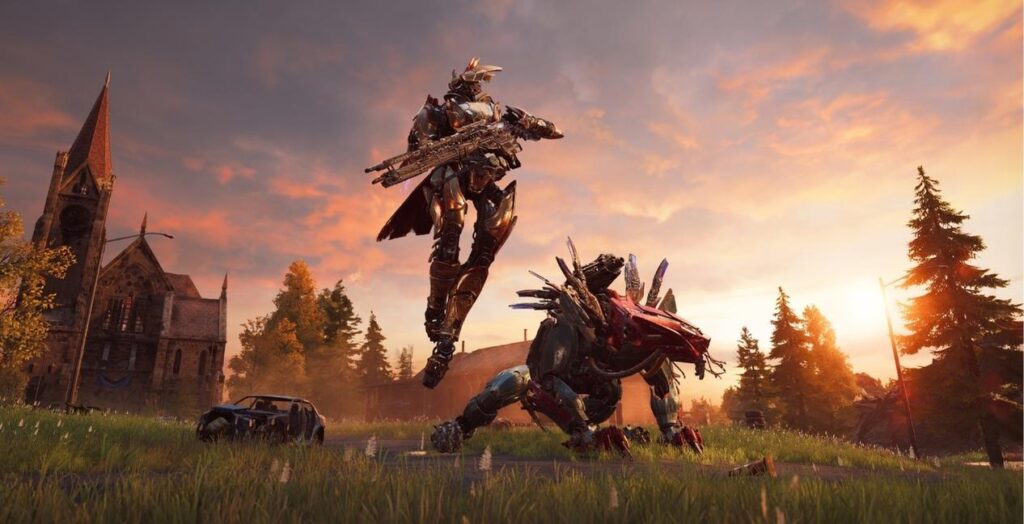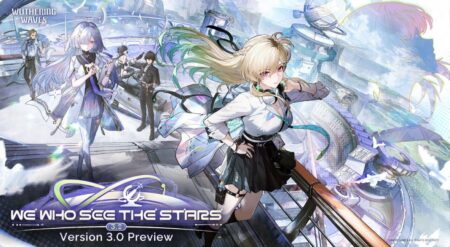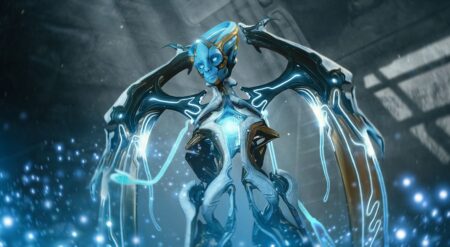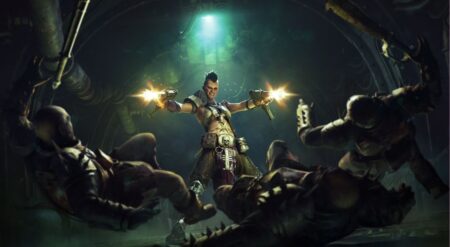At first glance, Steel Hunters looks like it might be chasing familiar territory. It’s a mech-based hero shooter with extraction elements, PvEvP encounters, and a style that could easily evoke comparisons to Titanfall or Apex Legends. But after going hands-on with the game and talking to the developers at GDC, it’s clear this is something else entirely—something slower, more tactical, and far more character-driven than I expected.
Developed by Wargaming, Steel Hunters drops players into high-stakes matches as teams of two Hunters—sentient mechs with distinct playstyles, lore, and cultural identities. The game blends elements of battle royale, extraction, and hero shooter mechanics across a large, destructible map filled with AI threats and enemy teams. Your objective? Loot up, fight smart, and extract before your enemies collapse around you.
The gameplay is fast-paced but not frantic. Every match is a balance between coordination and chaos. You’ll collect resources, manage limited ammo, and engage in strategic firefights across terrain that’s constantly shifting—thanks to partially destructible environments that allow you to literally walk through buildings. It’s not just set dressing either; destruction plays into how you move, fight, and survive. That scale matters. You’re a massive walking war machine, and the world reacts accordingly.
Steel Hunters offers balance, with its fast-paced energy never overwhelming the player.
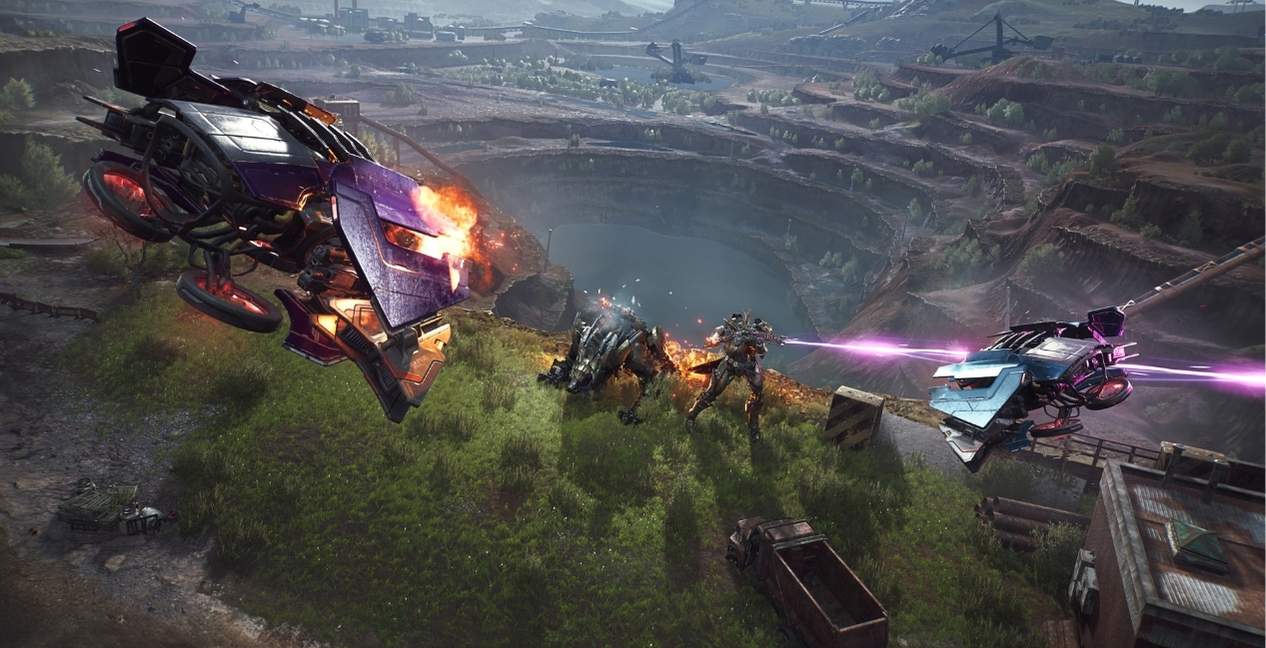
Combat feels tight. Each mech—or “Hunter”—has a clearly defined role, with both bipedal and quadrupedal options that give the roster a ton of visual and mechanical variety. You’ll find tanks, snipers, support units, and speedsters—each customizable with upgrade paths that unlock mid-match based on how you play. The devs are pushing players to experiment, adapt, and build synergy with their teammates. It’s not about twitch reflexes. It’s about decision-making, traversal, and tactical positioning.
What surprised me most was how emotionally grounded the experience feels, even without a traditional campaign. The Hunters aren’t just suits. They’re characters. The team scrapped early plans to include visible human pilots and instead focused on crafting sentient mechs with personality and history.
Voice acting, design, and cultural archetypes all reinforce this—whether it’s a Nordic bear-themed tank voiced by a Scandinavian actor or a Colombian-accented sniper with invisibility tech. The lore is delivered through match interactions and future video-novel-style shorts, giving every new character more weight than your average seasonal drop.
The foundation of Steel Hunters is already strong, with more adjustments to come.
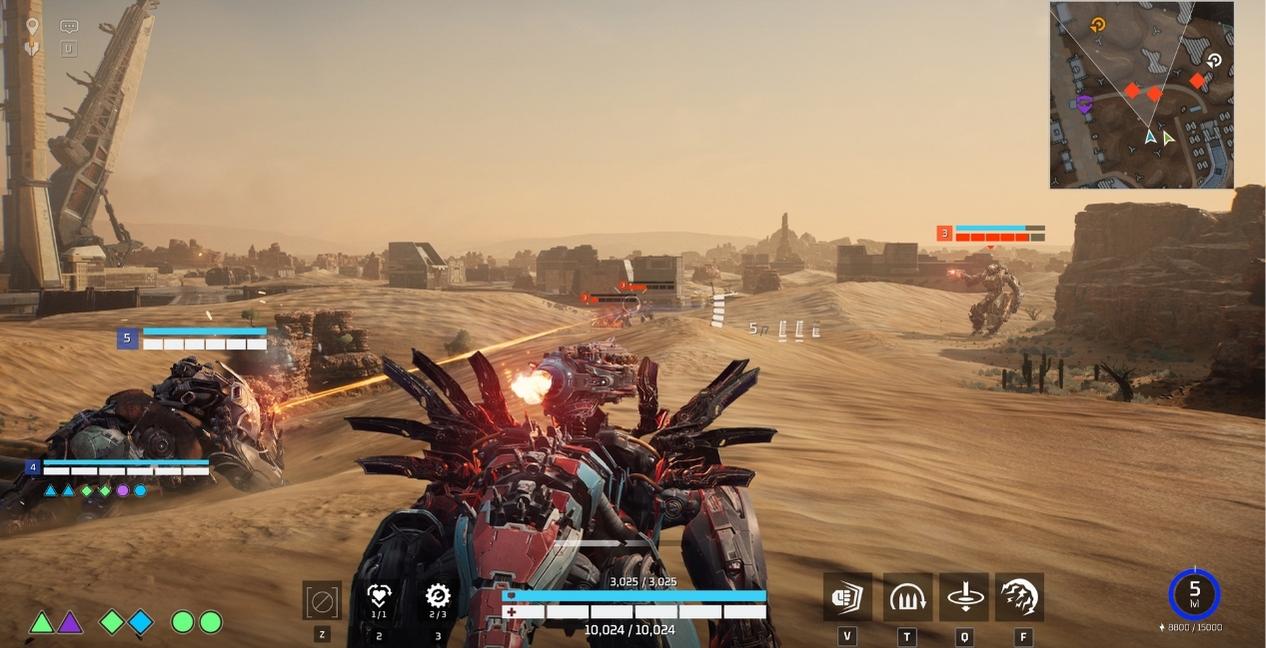
Despite being in early access, Steel Hunters‘ foundation is strong. The keyboard controls already feel polished in-match, and the studio plans to add full controller support in menus soon. Game modes are also evolving. Based on feedback from their closed beta, the team simplified one of their more complex PvEvP loops to improve clarity and reduce player fatigue. Accessibility features (colorblind modes, audio cues, UI improvements) are all on the roadmap.
The early access model itself is worth highlighting. There’s no monetization at launch. No battle pass. No progression wipe. Everything you earn, you keep. Updates will come in 5–6 week increments, and new Hunters, maps, cosmetics, and quality-of-life upgrades are planned through 1.0. The first post-launch character—a close-quarters brawler with a charge mechanic—drops just a few weeks after launch, setting a fast but manageable content cadence.
If you’re going in expecting Titanfall, you’re not wrong to feel that influence. Even the devs understand where that comparison comes from. But what Steel Hunters ends up feeling like is something closer to Apex Legends, just filtered through the mech fantasy and slowed down in a way that gives every decision room to breathe. It has that power fantasy, but it’s measured. Weighted. Intentional. And it feels like the kind of game that, with the right player base, could support a deep, competitive meta over time.
As other games like Marvel Rivals dominate the fast-paced hero shooter scene, Steel Hunters offers a counterbalance—an experience rooted in weight, scale, and strategy. It’s not a reskin. It’s not a clone. It’s something that wants to exist in its own lane, and after playing it, I think that lane has plenty of room to grow.
Steel Hunters is coming to early access on Steam on April 2, 2025.

